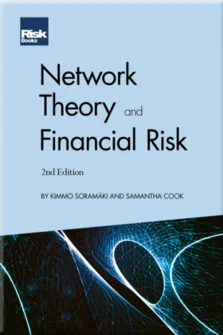Monitoring and stress testing financial market infrastructures
Preface
Acknowledgements
An introduction to financial networks
Creating and describing networks
Identifying important nodes: Centrality metrics
Uncovering latent structure: Clustering and community detection
Finding hidden links: Projection networks
Estimating unknown links: Network reconstruction
Fast insights: Visualising networks
Financial cartography: Network layouts
Brass tacks: Complexity reduction
Financial stability and systemic risk
Design and simulation of financial market infrastructures
Monitoring and stress testing financial market infrastructures
Financial crime and conduct risk
Financial markets
References
The day-to-day operations and activities of various participants in the global financial system depend on the uninterrupted function of systemically important payment systems (SIPS), central counterparty clearing houses (CCPs), securities settlement systems (SSSs), central securities depositories (CSDs) and trade repositories (TRs). Together, these types of institutions are referred to as financial market infrastructure (FMI). FMI regulations across many countries include requirements for monitoring and stress testing of individual institutions and, for certain types of FMIs, may include supervisory stress testing across multiple FMIs and jurisdictions (CFTC, 2016).
To level set and introduce the relevant terminology, we first define different types of financial infrastructures and describe their primary activity and role in the financial system. Then, the flow of financial market transactions and how different types of FMI interact are explained in general terms.
FMIS
The role and the primary activity of an FMI defines its type. It is important to note that financial innovation and/or introduction of new regulations may expand or contract the FMI universe. For example
Copyright Infopro Digital Limited. All rights reserved.
As outlined in our terms and conditions, https://www.infopro-digital.com/terms-and-conditions/subscriptions/ (point 2.4), printing is limited to a single copy.
If you would like to purchase additional rights please email info@risk.net
Copyright Infopro Digital Limited. All rights reserved.
You may share this content using our article tools. As outlined in our terms and conditions, https://www.infopro-digital.com/terms-and-conditions/subscriptions/ (clause 2.4), an Authorised User may only make one copy of the materials for their own personal use. You must also comply with the restrictions in clause 2.5.
If you would like to purchase additional rights please email info@risk.net











